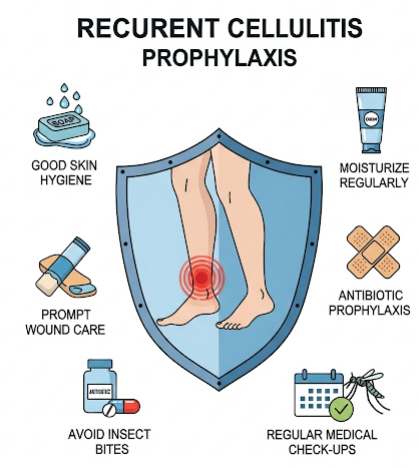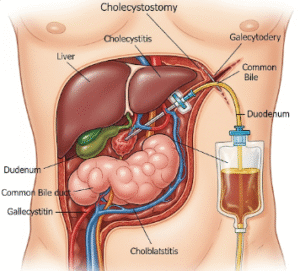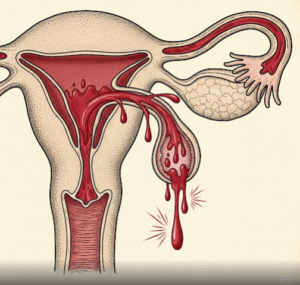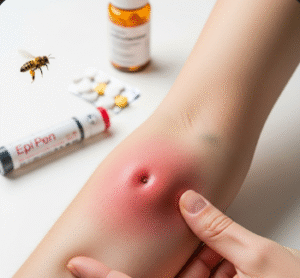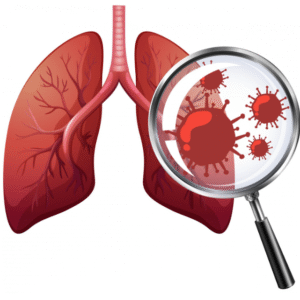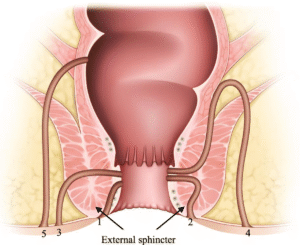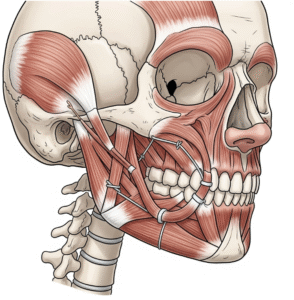What it is
➝ Cellulitis is a bacterial infection of the skin and subcutaneous tissues, most often caused by Streptococcus pyogenes or Staphylococcus aureus.
➝ Some patients experience recurrent cellulitis, often in the same limb or area, due to persistent risk factors such as chronic edema, venous insufficiency, obesity, diabetes, or fungal infections like tinea pedis.
➝ Prophylaxis refers to preventive strategies that aim to reduce the frequency and severity of these recurrent episodes.
➝ In Korea, recurrent cellulitis prophylaxis is managed through a combination of antibiotic prophylaxis, risk factor management, and supportive care.
Why it’s done
→ To reduce the risk of repeated cellulitis episodes, which can cause progressive tissue damage, lymphedema, and hospitalization.
→ To improve quality of life, since recurrent cellulitis is painful, disabling, and often causes missed work or social distress.
→ To decrease the need for repeated courses of antibiotics, lowering the chance of resistance.
→ To prevent complications such as chronic swelling, ulceration, and sepsis.
→ In Korea, prophylaxis is emphasized in patients with two or more episodes per year or with established lymphedema.
Alternatives
→ No prophylaxis: Only treating acute episodes, but this allows recurrences and long-term complications.
→ Antibiotic prophylaxis:
- Oral penicillin V (phenoxymethylpenicillin).
- Intramuscular benzathine penicillin injections every 2–4 weeks.
- Macrolides (erythromycin, azithromycin) or clindamycin if penicillin-allergic.
→ Non-antibiotic measures:
- Compression therapy for lymphedema.
- Skin hygiene and moisturization.
- Treating athlete’s foot or fungal nail infections.
- Weight management and glycemic control.
→ Surgical options: In select cases, procedures to improve venous circulation or reduce lymphedema.
Preparation
→ Identify and treat underlying risk factors before starting antibiotics (e.g., fungal infections, chronic wounds, poor circulation).
→ Patients are educated about skin care routines, including daily cleansing, moisturization, and rapid treatment of cuts or abrasions.
→ Baseline blood tests and allergy history are reviewed before prescribing prophylactic antibiotics.
→ In Korea, many clinics also use dermoscopy and fungal cultures to detect hidden tinea infections that contribute to cellulitis risk.
How it’s Done
→ Antibiotic prophylaxis:
- Oral penicillin V 250 mg twice daily (or 500 mg twice daily for higher BMI).
- Intramuscular benzathine penicillin every 2–4 weeks in patients with poor adherence or frequent relapses.
- Macrolides (erythromycin or azithromycin) used if penicillin allergy exists.
→ Duration: Typically 6–12 months, sometimes longer if recurrences persist.
→ Adjunctive measures:
- Compression stockings for chronic edema or lymphedema.
- Daily antifungal cream or powder for interdigital tinea pedis.
- Strict skincare routines with gentle cleansers and barrier creams.
→ In Korea, prophylaxis is often personalized, combining systemic antibiotics with lifestyle and skincare interventions.
Recovery
→ Patients on prophylaxis often notice a marked reduction in recurrence frequency.
→ Benefits usually become clear within the first year of prophylaxis.
→ With good adherence, many patients remain cellulitis-free while also experiencing improved skin integrity and less swelling.
→ Some patients may stop prophylaxis after 1–2 years if risk factors are controlled, while others require long-term therapy.
Complications
→ Medication-related: Gastrointestinal upset, antibiotic resistance, or allergy to penicillin.
→ Compliance issues: Long-term daily antibiotic use can be difficult for some patients.
→ Persistence of underlying risk factors: Even with antibiotics, cellulitis can recur if lymphedema or fungal infections are not treated.
→ Psychological burden: Patients with recurrent cellulitis may feel anxious about flare-ups despite prophylaxis.
Treatment Options in Korea
→ Korean dermatology and infectious disease specialists often recommend penicillin-based prophylaxis for recurrent cellulitis, aligned with global guidelines.
→ Intramuscular benzathine penicillin is available and commonly used for patients who struggle with oral adherence.
→ Many Korean clinics provide integrated care, combining medical prophylaxis with:
- Edema management through compression therapy and physiotherapy.
- Dermatologic care for fungal infections and chronic wounds.
- Nutrition and lifestyle counseling for weight loss and diabetes control.
→ Patient education is emphasized, including foot hygiene, early recognition of symptoms, and skincare practices.

